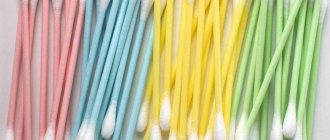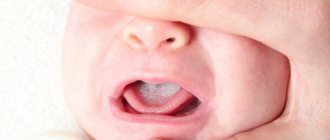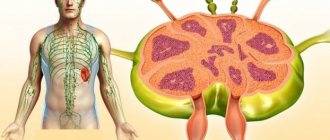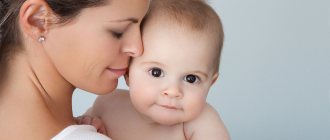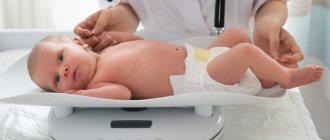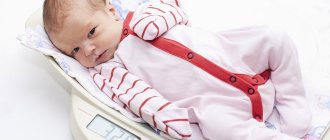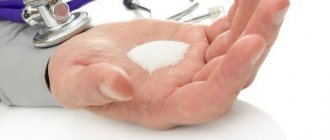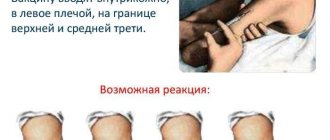INTRODUCTION
When you see a small child, endearing words themselves come to mind: “Baby, bunny, baby…”. How many different words we come up with for our children! Of course, motherhood is the greatest happiness. But also the biggest responsibility.
The child is in dire need of care, love and devotion from adults, primarily from the mother. And, probably, every parent doubts the adequacy of their knowledge and experience to provide adequate care and upbringing of their child. Of course, a huge number of articles, reference books, and manuals have been published and continue to be published on this topic. It is worth adding the abundance of information received from friends, relatives, and doctors. Unfortunately, in this “heap of knowledge” it is sometimes difficult to separate the “wheat from the chaff”.
Without claiming to be the “ultimate truth”, in this manual the authors tried to present the issues of caring for children from a medical point of view, therefore it is primarily intended for medical students studying in the specialty “pediatrics”. But parents, after reading the manual, will be able to find out for themselves how to solve some complex issues of child care.
Do not forget that proper child care is a prerequisite for its harmonious development. It must be borne in mind that the smaller the child, the more important general hygiene measures are for his health. Caring for young children has a number of features, knowledge of which is mandatory for pediatricians and parents.
Choice of paste and brush
When choosing a brush, pay attention to these qualities.
- The head of the brush should be small and cover two teeth, no more. It will be very difficult to thoroughly remove plaque with a brush with a large head due to its clumsiness.
- The brush head should have silicone pads to make cleaning safe. For babies under one year old, a protective silicone ring (limiter) will not be superfluous.
- The bristles should be soft, thick and short.
- The handle of the brush should be comfortable for both the child and the parents, who will help him with cleaning for a long time.
When choosing pasta, consider the following.
- The product must be safe to swallow, hypoallergenic, and free of foaming agents SLS and SLES.
- The abrasiveness of the paste should be from 20 to 30 RDA.
- You should consult your doctor about using fluoride pastes.
- An excellent component for baby toothpaste is xylitol. It prevents tooth decay.
- Hydroxyapatite in the paste will build into the enamel and strengthen it. It is what 96% of tooth enamel consists of.
Biorepair Kids (from 0 to 6 years) with strawberry flavor
Apadent Kids with strawberry and grape flavor (from 0 years old)
Brush-Baby Strawberry (from 0 to 2 years)
Jack N Jill Banana Toothpaste
Chapter 1 CARE FOR HEALTHY EARLY CHILDREN
Newborn
Primary toilet of a newborn
carried out in the delivery room only by specially trained medical personnel. Strict adherence to the rules of asepsis and antisepsis is mandatory. For each child in the delivery room it is necessary to have:
• An individual set of sterile linen (blanket, 3 calico diapers), which is stored in a special thermostat or heated cabinet.
• Individual sterile kit for initial treatment by a nurse in the maternity ward of a newborn, which contains 2 Kocher clamps, a Rogovin staple and forceps for its application, a silk ligature, a triangular gauze cloth folded 4 times, cotton swabs, pipettes, cotton balls, a disposable oilcloth or a paper measuring tape 60 cm long and 1 cm wide, oilcloth “bracelets”, a rubber spray can or a pear.
The midwife, wearing sterile gloves, receives the baby and places him on a special sterile metal tray covered with a sterile diaper. Subsequently, using a rubber balloon, a disposable aspirator, or a catheter connected to an electric suction, the contents are cleared from the newborn’s mouth and nose.
After the end of the pulsation, two Kocher clamps are applied to the umbilical cord, at a distance of 10–15 cm from the umbilical ring, with a distance between them of 2–3 cm. The surface of the umbilical cord between the clamps is wiped with 96° alcohol and the umbilical cord is crossed between the clamps with sterile scissors. The cut surface is cauterized with a 5% iodine solution.
Immediately after an uncomplicated birth, the baby is placed on the mother's stomach. This is usually done in two stages.
At the first stage
the baby is laid out on the mother's stomach and covered with a sterile sheet even before the end of the umbilical cord pulsation.
After completion of pulsation and initial treatment of the umbilical cord, as well as wiping, the child returns to the upper part of the mother’s abdomen. To do this, the mother's chest and abdomen are wiped with sterile swabs with saline solution ( second stage
). The child, lying on his stomach, is held by the mother's hand and covered with a sterile sheet or sheet and blanket. The child's searching behavior gradually manifests itself - sucking movements, turning the head, crawling movements of the limbs. When these reflex movements occur, the mother can direct the baby's movements towards the breast and nipple. The baby should independently grasp the nipple and areola with vigorous head movements that lift the breast. He grabs the breast with his wide open mouth, placing his lowered tongue under it.
Being at the mother's breast 30 - 45 minutes after birth, having experienced serious birth stress, the child restores contact with the past. He again hears his mother’s heartbeat, her voice, and finds a warm home.
Skin-to-skin contact is very important, since the tactile analyzer is the leading one in newborns and receives its greatest development in the womb. It promotes the formation of close relationships between mother and child, stimulates the mother’s lactation, has a positive effect on the further development of the child’s psyche and emotional sphere, and also helps to enhance the feeling of motherhood.
When breastfeeding early, eye contact is also important. The face of the mother or father, which he sees for the first time, will remain in the baby’s memory for the rest of his life.
If sucking does not take place at the first skin contact, then holding the baby at the breast for more than 1.5 hours is inappropriate; he will sleep.
It is imperative to show the newborn to the mother, drawing her attention to the sex of the child and congenital anomalies, if any.
After the first feeding, the baby is washed under running water (water temperature 37 - 38 °C), blotted with a sterile diaper (if contraindications, this step is skipped) and transferred to a changing table heated from above by a radiant heat source. At a distance of 0.2 - 0.5 cm from the umbilical ring, a metal or plastic Rogovin clamp is applied to the umbilical cord using a special clamp (instead of a Rogovin clamp, the use of a silk ligature is allowed). The remainder of the umbilical cord is cut off with sterile scissors. Using cotton swabs, the umbilical stump is lubricated with a 5% KMnO4 solution, and a sterile bandage is applied from a triangular gauze cloth folded 4 times. Cotton balls, generously moistened with sterile vaseline or vegetable oil from individual 30 ml bottles, treat the skin, removing excess vernix, mucus, and blood (complete removal of vernix is not necessary). The surface of the folds is processed in a certain sequence (neck, axillary, groin, knee, elbow).
Prevention of gonoblennorrhea.
Using pipettes and cotton balls, instill 2 drops of a 30% solution of sodium sulfacyl (albucid) into the eyes. After 2 hours, the procedure is repeated. Additionally, for girls, 2 drops of the same solution or 2% AgNO3 solution are instilled into the genital opening.
The child is weighed in a sterile diaper, body length, chest and head circumference are measured using a disposable centimeter tape according to the general rules for conducting anthropometry (methodology, see p. 29). Oilcloth “bracelets” are attached to the child’s arms, which indicate the mother’s last name, first name, patronymic, date and hour of birth, gender, and birth history number. The baby is swaddled (see p. 19 for the method) and sent to the children's department or ward with the mother, usually no later than 1 hour after birth.
Caring for the umbilical cord and umbilical wound.
Processing of the umbilical cord remains is carried out only with clean hands, strictly observing the rules of asepsis. 12 - 18 hours after the birth of the child, the gauze bandage from the umbilical cord is removed and no longer applied. The “stump” is treated daily with 96° alcohol and 5% KMnO4 solution until it falls off (days 3–5). After the umbilical cord falls off, the umbilical wound is treated daily until it epithelizes (usually 7–10 days). To do this, use a sterile stick soaked in a 3% H2O2 solution to wash the wound from the center to the periphery, then dry the wound with another sterile stick. Using a new sterile stick, treat the wound with a 5% KMnO4 solution or 1 - 2% brilliant green solution. Since aniline dyes paint the area of the umbilical ring and thereby complicate the timely diagnosis of inflammatory diseases of the navel, treatment with 96° alcohol is recommended (a few drops are instilled into the umbilical wound).
To prevent purulent-inflammatory diseases of the skin and navel in newborns, the drug “Lifuzol” (“Statizol”) is used, the active principles of which are furatsilin and sea buckthorn oil. The drug is available in aerosol packaging, film-forming.
Patronage of a newborn.
During the first 2–3 days after discharge from the maternity hospital, the child is visited by a pediatrician and a visiting nurse. In the first month, the doctor examines the child 2 more times. At the age of one month, a full anthropometric examination is performed in the clinic with an assessment of physical development, examined by all specialists.
According to the order of the Ministry of Health and Social Development of Russia dated April 28, 2007 No. 307, examination by a pediatrician is subsequently carried out once a quarter in the clinic, where anthropometry, assessment of physical and psychomotor development, as well as examination by other specialists are carried out. Thus, a healthy child in the first year of life is examined by a pediatrician 6 times.
By the time of discharge from the maternity hospital (3rd - 5th day of life), a healthy child should be sucking well, the daily weight gain is 20 - 30 g, stools up to 5 times a day, pasty, yellow, sourish odor, clean skin, Slight icterus may remain (remnants of physiological jaundice), the umbilical wound without discharge, epithelializing.
Daily care of a newborn in a maternity hospital.
Daily care for a newborn is carried out by a nurse on a special changing table, which is covered with a blanket, oilcloth, and a clean diaper on top. Good lighting is required, air temperature is 20 – 22 °C.
Before using the toilet, a newborn must wash his hands with warm water and a brush for 2 minutes.
Daily care for a newborn includes the following: measuring temperature and body weight, caring for the umbilical cord and umbilical wound, cleaning the skin and mucous membranes.
Determination of body weight
(see p. 30 for technique) are carried out at the same time every day, usually before the first feeding.
Body temperature measurement
(for technique, see p. 114) healthy newborns are given 2 times a day - morning and evening. The results of weighing and temperature measurements are recorded in the child’s developmental history.
skin care
and
mucous membranes
, pay attention to the condition of the skin folds; after each act of defecation, the child is washed, the nose, eyes, and, if necessary, the external auditory canal are cleaned (for technique, see p. 13).
The oral cavity of healthy newborns is not wiped, since the oral mucosa is dry and easily injured.
In cases where mother and child are together (currently accepted), the nurse teaches the mother how to care.
Issues for discussion
Individual set of sterile linen for a newborn.
Kit for primary treatment of a newborn.
Technique for clearing contents from the upper respiratory tract.
Umbilical cord ligation technique.
Technique of primary leather processing.
Technique for the prevention of gonoblennorrhea.
Caring for the umbilical cord and umbilical wound.
Necessary measures to avoid confusing children in the maternity hospital.
Asepsis and antiseptics during the initial treatment of a newborn.
Indicators of newborn health.
Daily examination and care of the newborn.
Practical skills
Primary toilet of a newborn.
Caring for the umbilical cord and umbilical wound.
